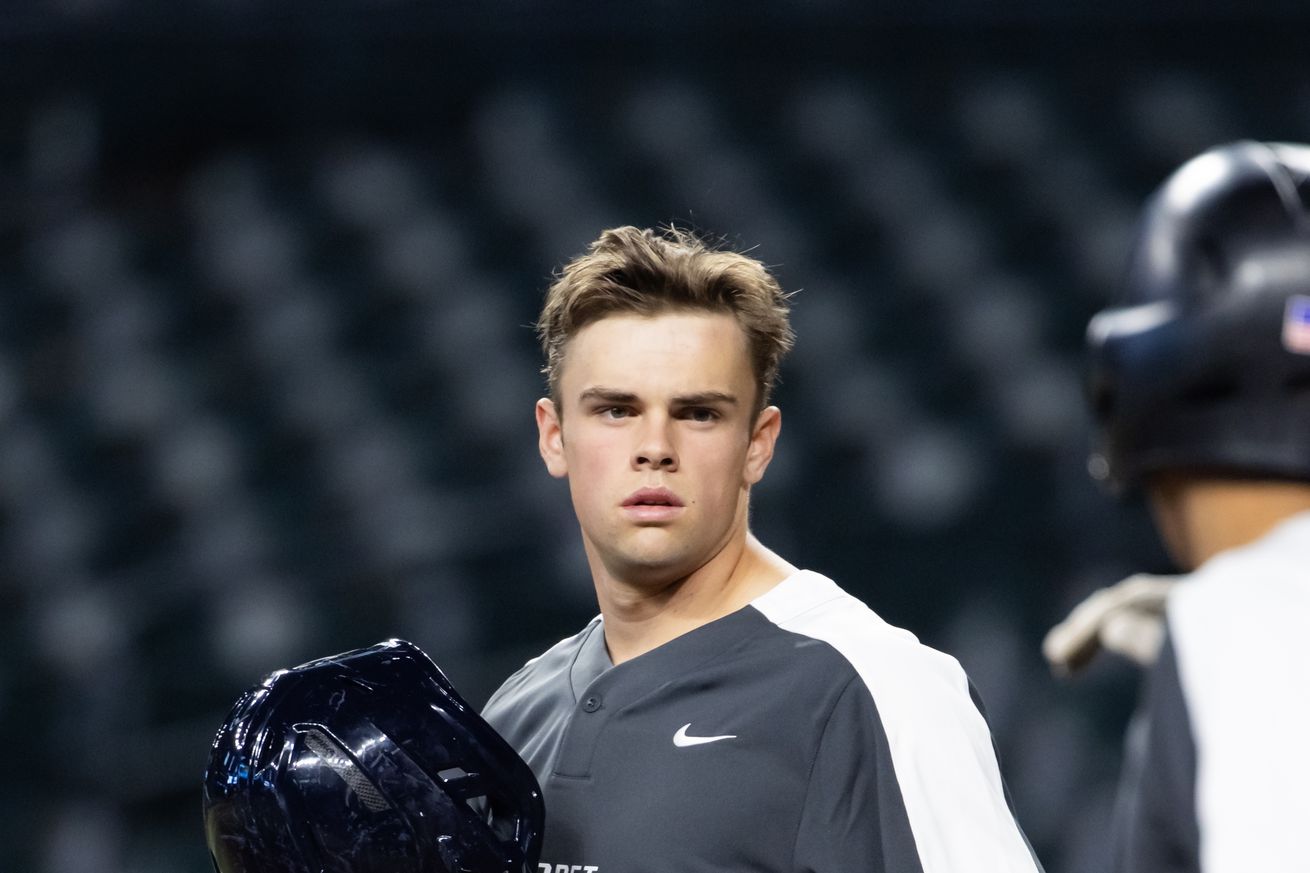
Decisions, decisions
The big news out of the draft yesterday was the Diamondbacks taking Slade Caldwell, a player who fits well with some of the draft decisions they’ve made in the past. Ryan Waldschmidt (the lone college player taken by the Diamondbacks on the first day) was not unexpected, but JD Dix at #35 and Ivan Luciano at #64 were both big surprises. Dix was not as big of a reach as people might think; Baseball America had him ranked 31st among high schoolers, and 62nd overall. There were much bigger reaches according to the various rankings; Dante Nori, for example, is ranked below Dix by Baseball America and he went to the Phillies 27th overall. By rankings, Luciano was the biggest reach, as he was ranked 220th by MLB Pipeline and not ranked by Baseball America.
There’s also a new wrinkle to the drafting and signing process this year that hasn’t gotten enough coverage: the 165 domestic maximum for minor league players. To summarize, teams can only have 165 players in their American (or Canadian) affiliates. As with the major league 40-man roster, players who are on the 60-day or full-season IL do not count against that 165 maximum (although no more that 15 players can be on those lists) but players who are on the 7-day IL and temporarily inactive lists do. (I am not certain, but I believe Andrew Saalfrank, given that he is on the restricted list, does not count against the limit.) That means that the Diamondbacks will need to find space for roughly 20 players, which means 20 players will be losing their jobs in the organization. This is likely one reason why the complex league season was moved up; teams will be able to move players from the complex they want to keep up the ladder and store players they draft but who they do not want to play (particularly pitchers) on the complex league rosters for the remainder of the season.
This means that, while in the past teams would take the best player available and not be concerned about position, picks in later rounds will need to be made with a view as to which players currently in the organization will be released (or possibly traded at the deadline as part of a package.) And this might also partially explain the reach for Luciano. Catcher is the one position that can’t just be filled by someone on the roster who typically plays elsewhere. Teams have to have catchers. While Luciano was a reach and likely would have been available a round or two later, if he was the last catcher the Diamondbacks liked well enough to take in the first ten rounds (which are the bonus pool rounds) reaching for him makes some sense.
Similarly, shortstop is a relatively deep position for the Diamondbacks, with four of the top-ten prospects per MLB Pipeline playing the position. There’s also Yerald Nin, currently in the complex, who is climbing up some rankings. But other teams know that and are relatively certain to ask for one or more of those shortstops in trades. If Tommy Troy or Cristofer Torin or Yerald Nin or Jose Fernandez were to get traded, the Diamondbacks would want someone to fill in. Shortstop is, after catcher, the hardest position to fill.
As the second day of the draft begins, there are still a number of top-100 and even top-50 players available. This includes players who were connected to the Diamondbacks as early as the first round, such as Drew Beam and Dakota Jordan, as well as Michael Massey. Additionally, there are some notable prep names from Arizona who might get selected, such as Mason Russell and Smith Bailey. Some names I’m watching:
Dakota Jordan. He’s the best player available according to pretty much every board. He was dropping down boards, but no one expected him to last this long. If teams could trade draft picks, I’d imagine that the A’s would be fielding calls right up to the buzzer with teams looking to make a deal. Surely he doesn’t last all the way to the Diamondbacks again, but if he does (and if they have enough money in the pool) he has to be the pick, surely.
Akhil Nimmala. If that name sounds familiar, it’s because his brother Arjun was picked 20th overall by the Blue Jays last year. Nimmala is big, strong, and just 17.
Kai’mi Kahalekai. There aren’t a lot of players from Hawaii, particularly pitchers, who get much in the way of draft helium. But Kahalekai is 6’8”, throws 90+ with some decent secondary stuff, and also just decommitted from Texas, quite possibly decreasing his price.
Mavrick Rizy. He’s the tallest player in the draft, listed at 6’9” and is a right handed pitcher. He’s also from Massachusetts, which isn’t exactly a baseball hotbed. But he’s committed to LSU and it’s not particularly likely that he would sign.
Ty Southisene. He’s a foot shorter than Rizy and is possibly the shortest player in the draft. A shortstop now, he would probably wind up at second base, where he might draw some comparisons with Jose Altuve, although his tools aren’t at that level.
And, finally, the best names available: Wyatt Parliament, Dub Gleed, (Funky) Cole Messina, Fenwick Trimble, Matthew Champion, Slate Alford, Connor Hujsak, Sir Jamison Jones, and Sawyer Farr.